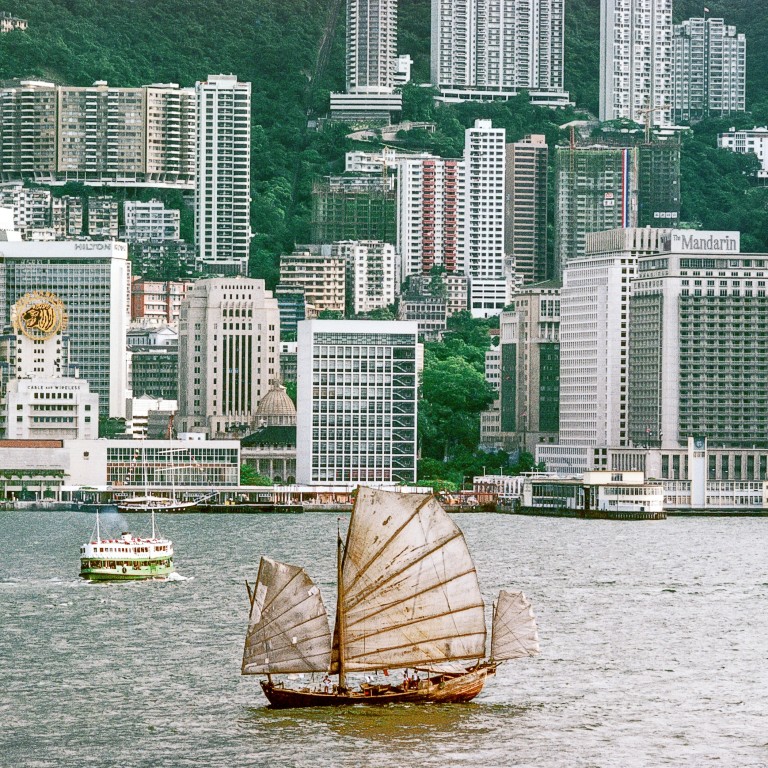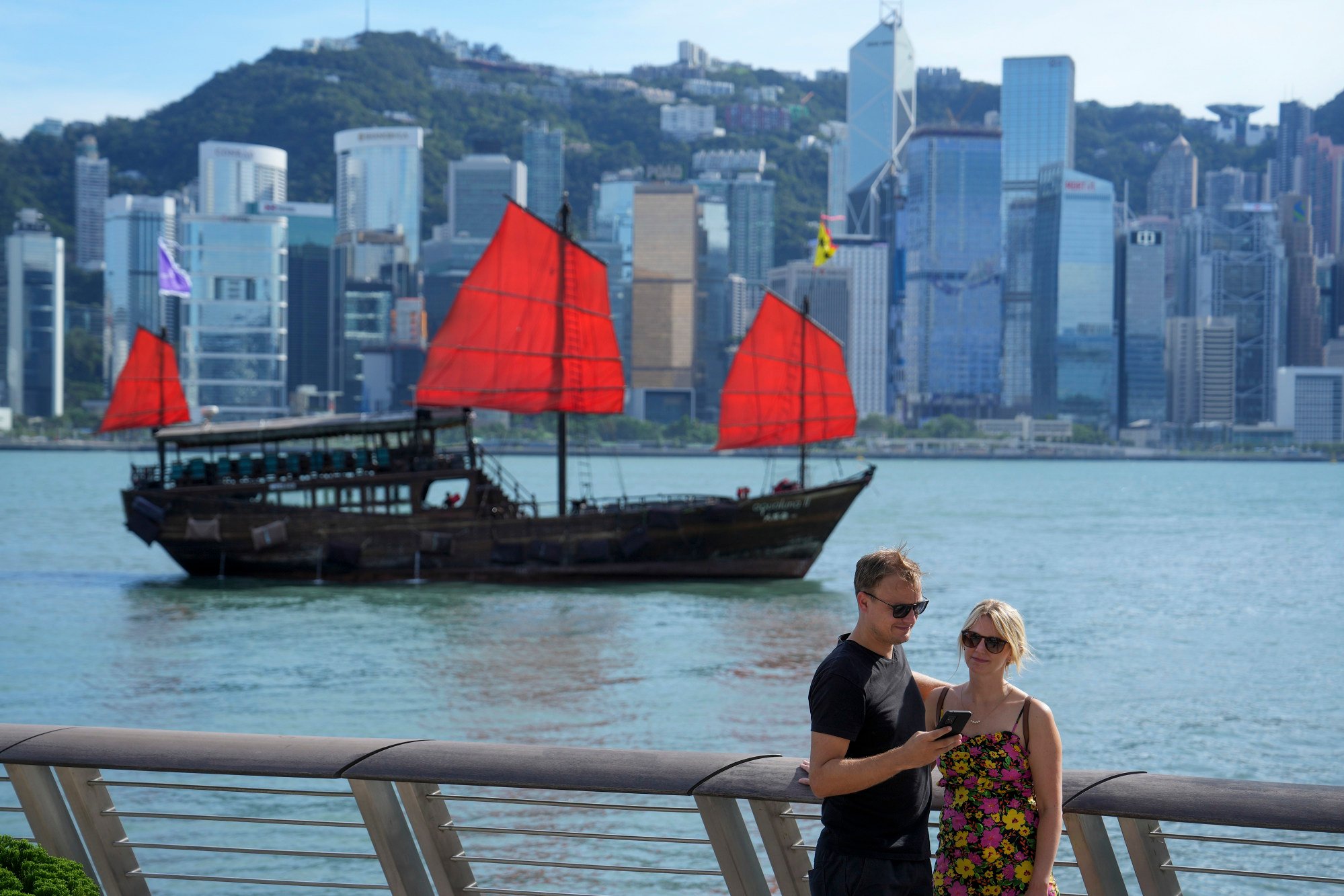
It’s surely time to drop the sailing junk as a symbol of Hong Kong – but who knows? Desperate tourism chiefs may have them sail the seas again
- Chinese junk fleets left Hong Kong decades ago, their sails made redundant by engines and their purpose gone with the demise of inshore fishing
- The Hong Kong Tourism Board successfully used its red junk symbol to promote the city, but it long ago ceased representing reality
Much that formerly defined Hong Kong’s public life, civil society, educational discourse, media landscape and overall international image has been deliberately and resolutely retrograded within the space of a few years.
So perhaps it is only a matter of time before yet more obsolete design imagery that – once upon a time – was successfully deployed to promote, represent and epitomise everything Hong Kong had to offer is dragged out of retirement, subjected to revitalisation initiatives, and then forced to attempt another weary, futile innings.
Before much longer, one can confidently predict, the world will once again see sailing junks redeployed for tourist marketing campaigns and other rebranding exercises.
This particular revitalisation initiative would be unsurprising – after all, when every other worn-out, time-expired Hong Kong trope has been attempted without success, why not take another stale packet of ready-mix ingredients down from the larder shelf, blow off the dust, shoo away the weevils, add warm water and hope for the best?

The definition of true madness, it has been rightly said, is a continuous repetition of the same process, in the same way, with the confident expectation that – somehow – a different outcome will result the next time.
Chinese seagoing junks, with their distinctive batwing sails, were used to symbolise Hong Kong to the world from the British colony’s mid-19th century urban beginnings. Ever afterwards, these graceful vessels featured on postcards, paintings, banknotes and much else.

Established in 1957, the Hong Kong Tourist Association (Hong Kong Tourism Board since 2001) later adopted a stylised cinnabar-red junk as its symbolic trademark for Hong Kong – so successful that even for those who have never been to Asia, this image immediately comes to mind whenever the city is mentioned.
Much as the Eiffel Tower and Buckingham Palace symbolise Paris and London, sailing junks cruising through Victoria Harbour in the late afternoon light, in front of the massed ranks of the city’s skyscrapers, offer a plethora of seductive Hong Kong marketing banalities.
But while the stylised sailing junk logo is a worldwide symbol for Hong Kong, unfortunately there have been no authentic Chinese sailing junks in local waters for some decades.

Their decline began in the late 1940s; the establishment of the Fish Marketing Organisation, and rapid motorisation of the local deep-sea fishing fleet – aided by government grants and loans – meant fishermen stayed away for weeks in deep-sea fishing grounds off Hainan in southern China, and Vietnam.
Far-reaching changes transformed both lifestyles and livelihoods for local fishing families. Multi-generational families once lived on a single junk, but now remained behind in new resettlement estates at Aberdeen, Shau Kei Wan and other former anchorages, and their children attended school on land – often for the first time; most never returned to the sea.
Increasingly strident political campaigns in mainland China in the 50s, combined with Communist collectivisation of fisheries, caused many floating families to quietly sail away in the night, never to return. Thereafter, they only fished within Hong Kong territorial waters, which put further pressure on local fish stocks.
Where did the word ‘junk’ come from?
Until the mid-60s, gently bobbing lights from inshore fishing boats were a familiar local sight. Small craft cruised the shallows with hurricane lamps suspended over the bows; fish – attracted by the glare – would be easily scooped up. Small fish, fry and other marine life were also netted, which further exhausted Hong Kong’s inshore waters commercially.
Massive overfishing, compounded by annually worsening marine pollution, caused the Hong Kong fishing industry’s terminal decline over the next three decades. By the early 70s most local vessels carried sails only for emergency auxiliary power.
A few motorised tourist junks with fixed sails still confuse the credulous but – much like other endlessly recycled Hong Kong clichés – the obsolete sailing junk icon is decades beyond having any genuine symbolic purpose.

